Leadership in Nursing: Providing Patient-Centred Care
VerifiedAdded on 2022/09/28
|12
|695
|31
Presentation
AI Summary
This narrated PowerPoint presentation focuses on providing patient-centred care within a nursing context, addressing the importance of patient involvement and considering the patient as a partner in their care journey. It highlights the eight key principles of patient-centred care, emphasizing respect, coordination, information provision, comfort, emotional support, family involvement, and access to further care. The presentation identifies problems such as lack of information disclosure, differing health beliefs, and high staff turnover, along with their impacts on patient trust and satisfaction. The presentation also discusses the skills and approaches needed for delivering patient-centred care at the graduate level, emphasizing the importance of empathetic relationships. The presentation concludes with suggestions for future plans, including increased patient responsibility for their health, easier access to care professionals, and the incorporation of shared leadership. The presentation is supported by evidence-based literature and is designed to meet the requirements of a Continuing Practice Development (CPD) activity for nurses, providing a foundation for leadership in beginning practice and addressing topics related to patient safety and a healthy workplace.
1 out of 12
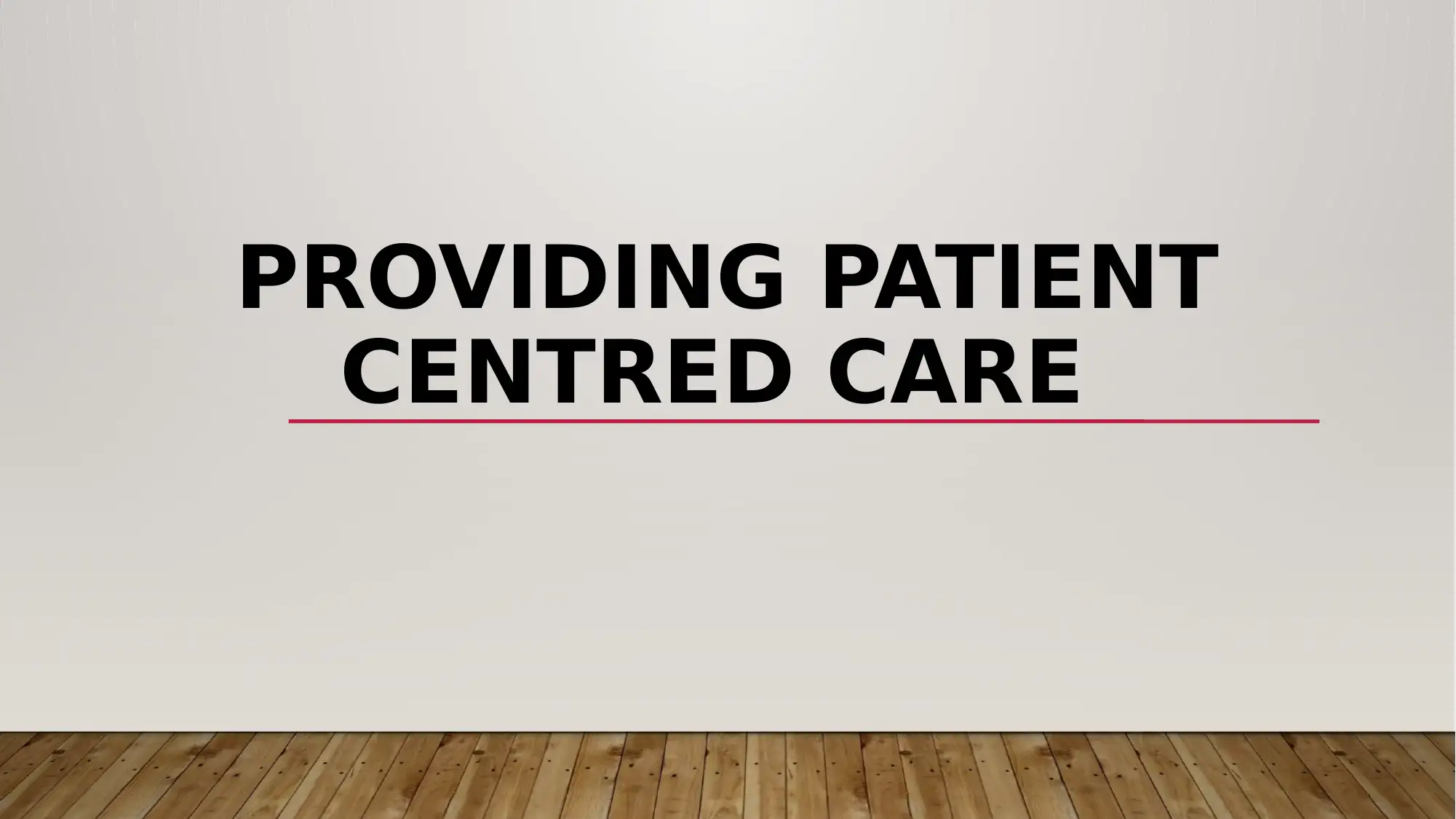
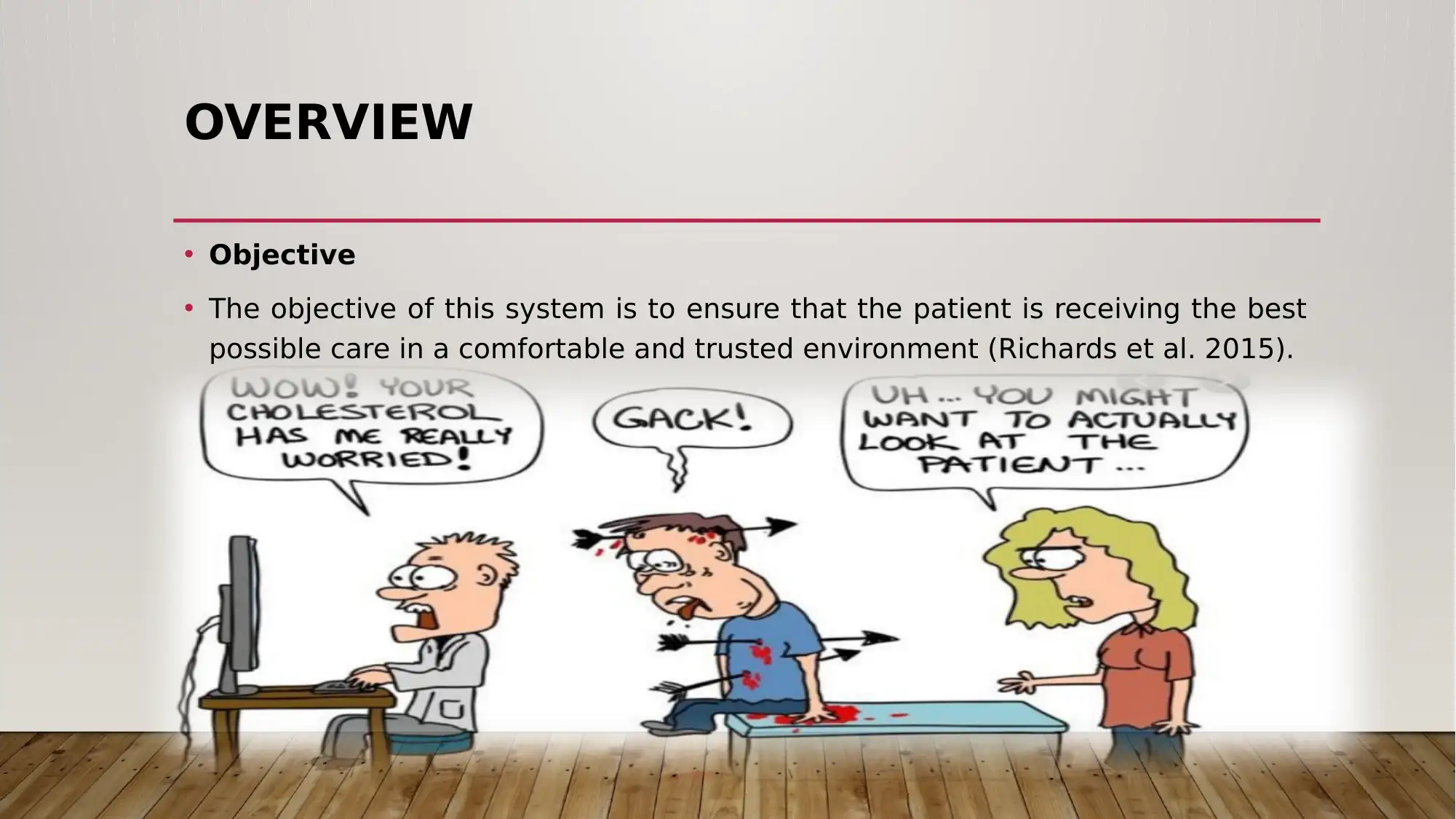
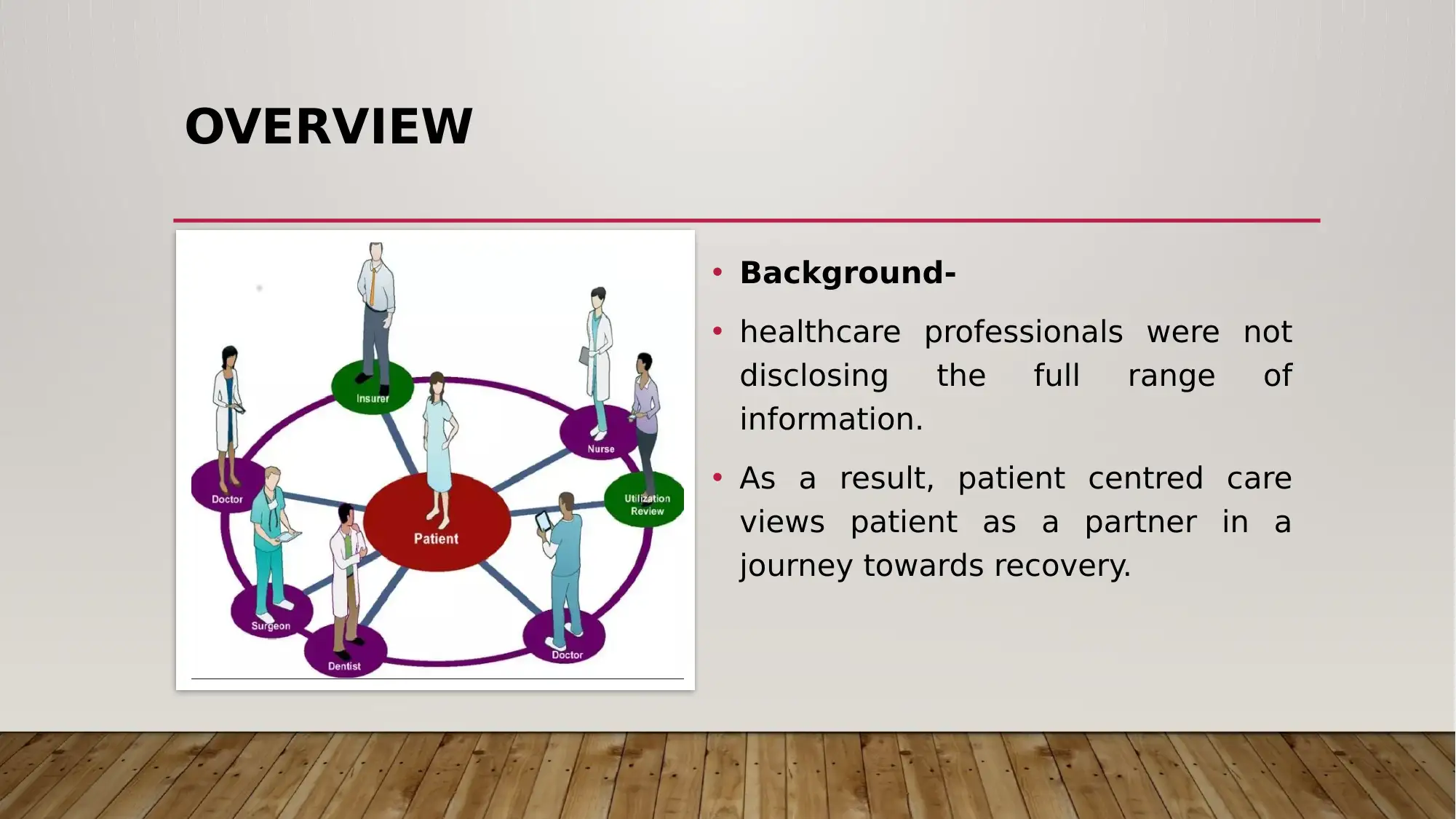

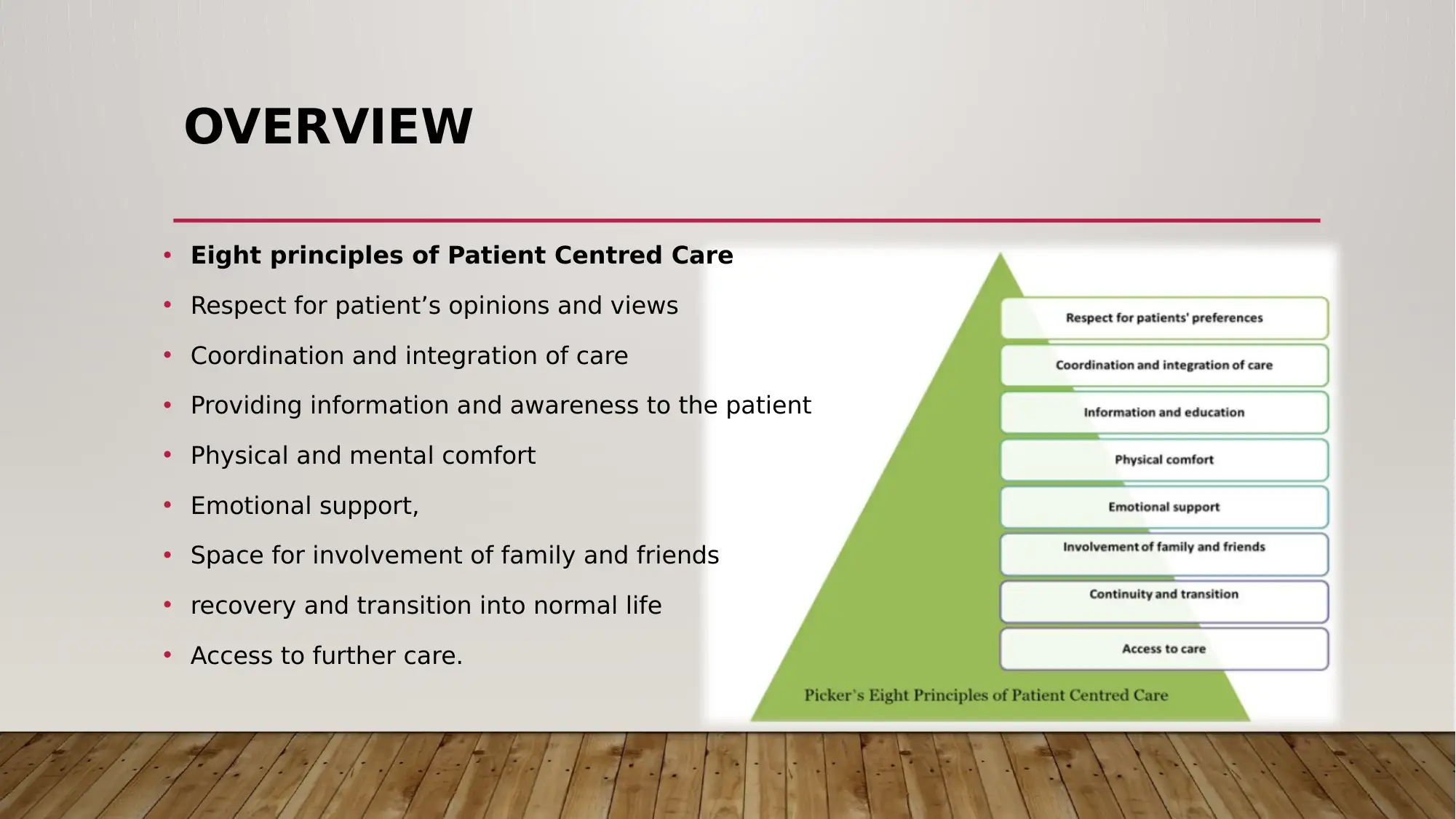
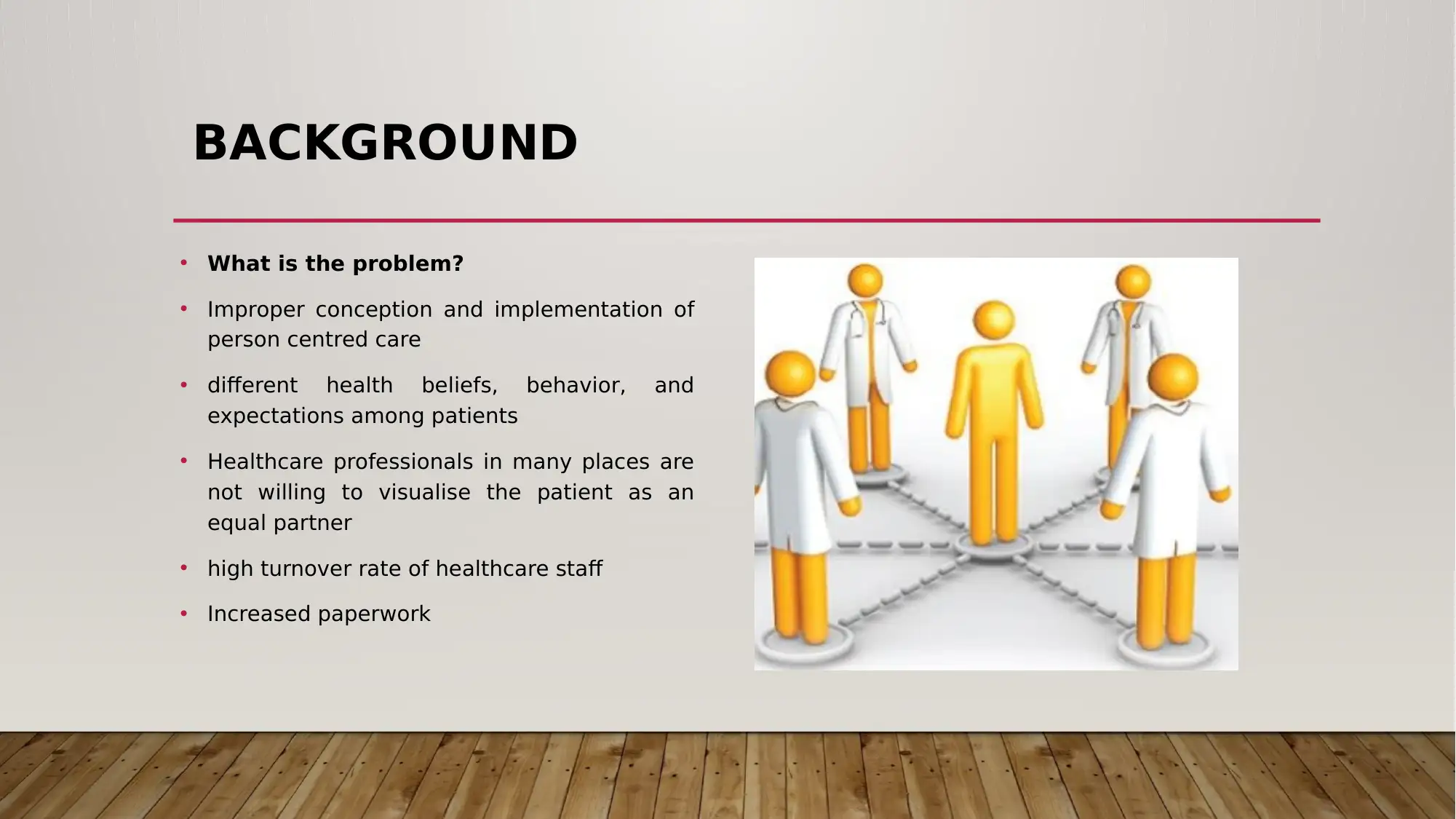
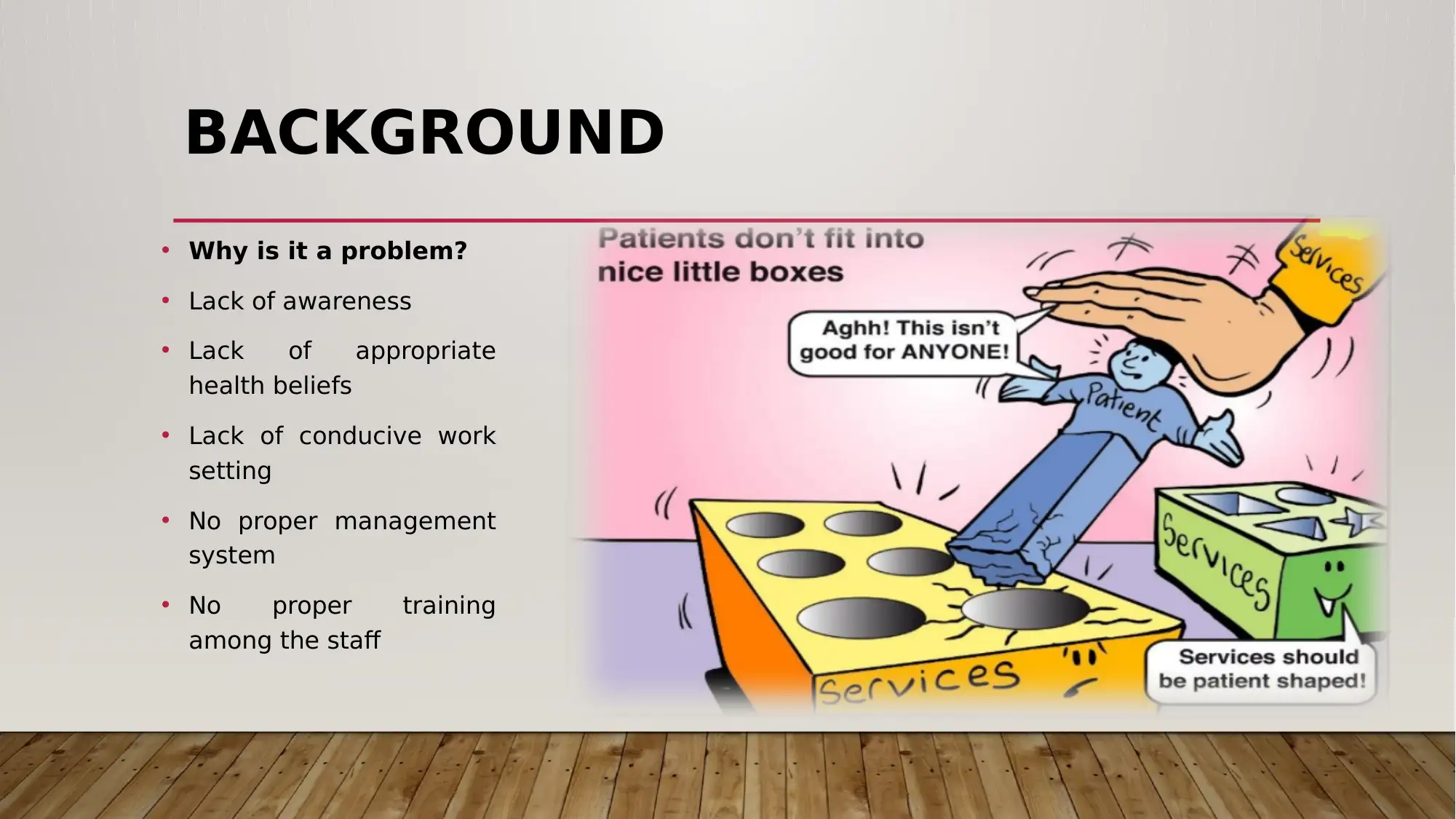
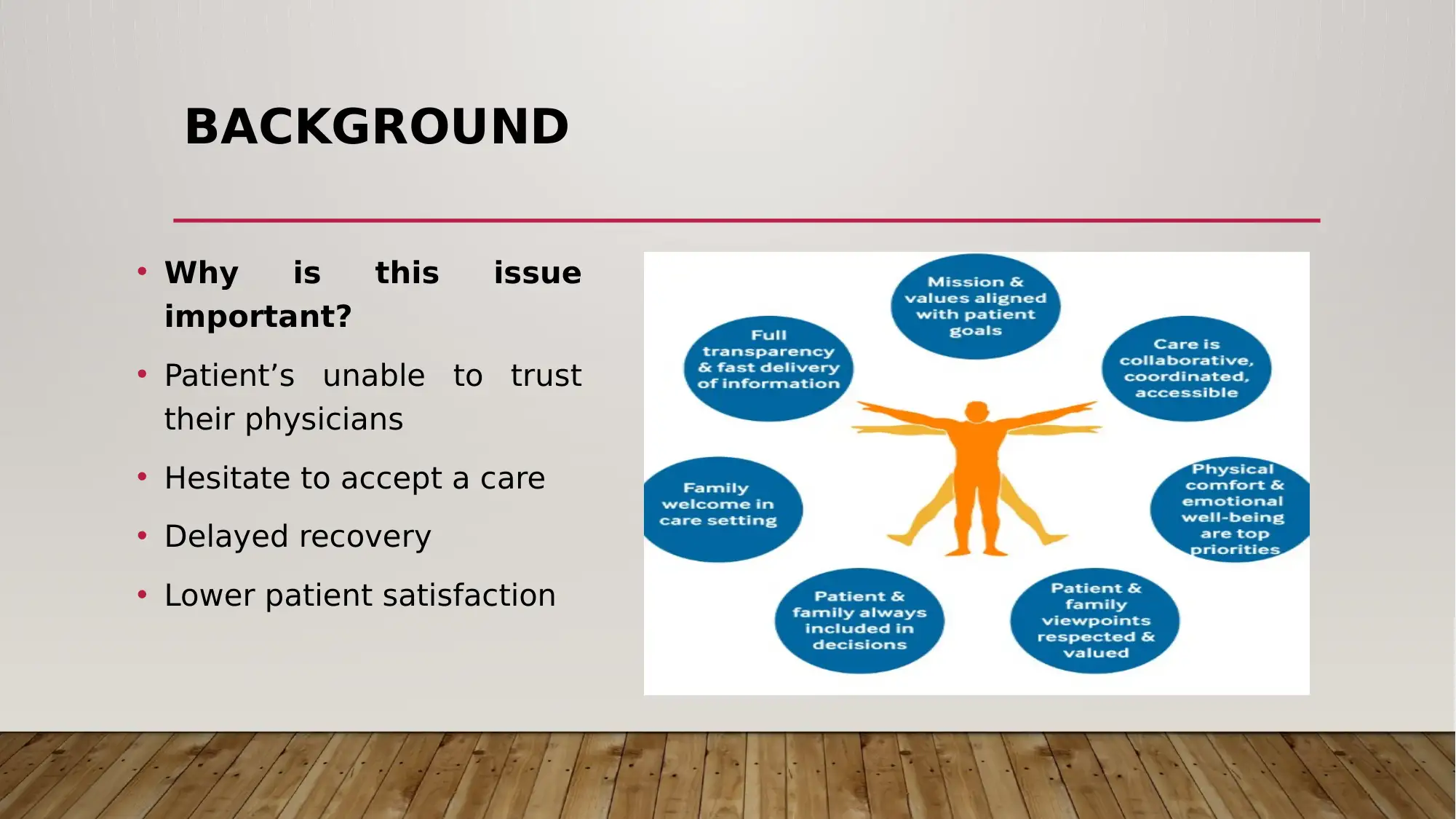
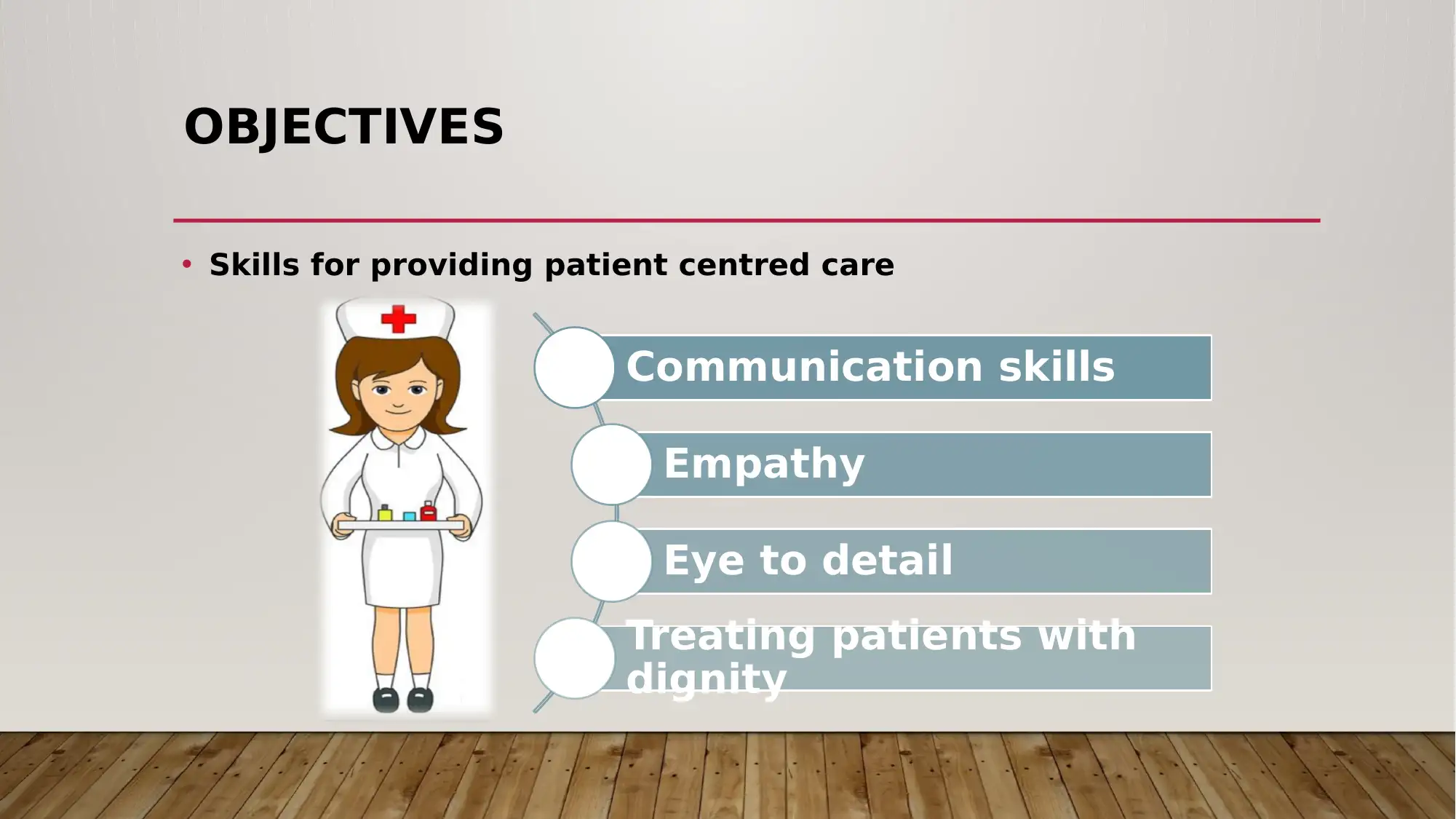
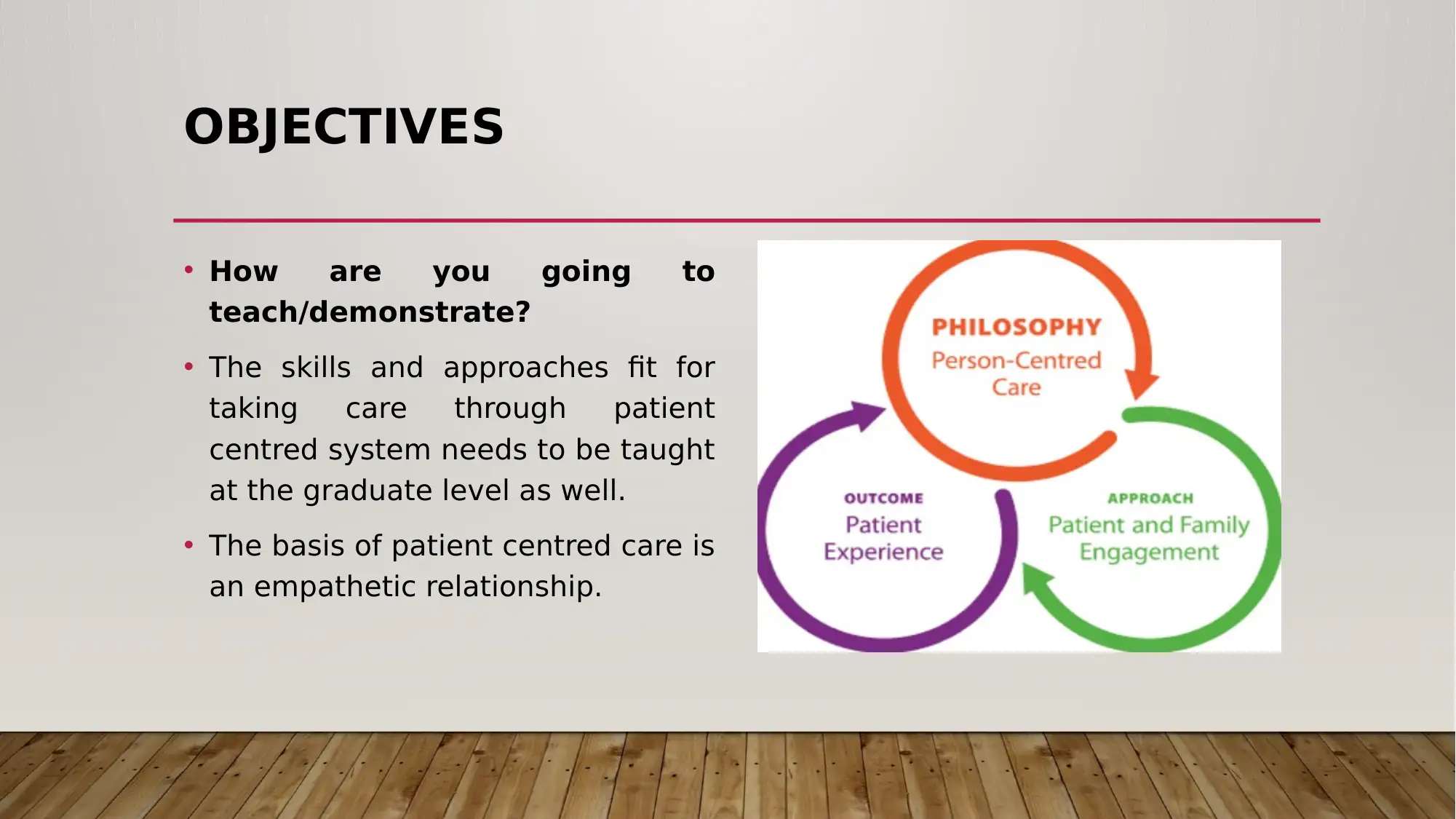
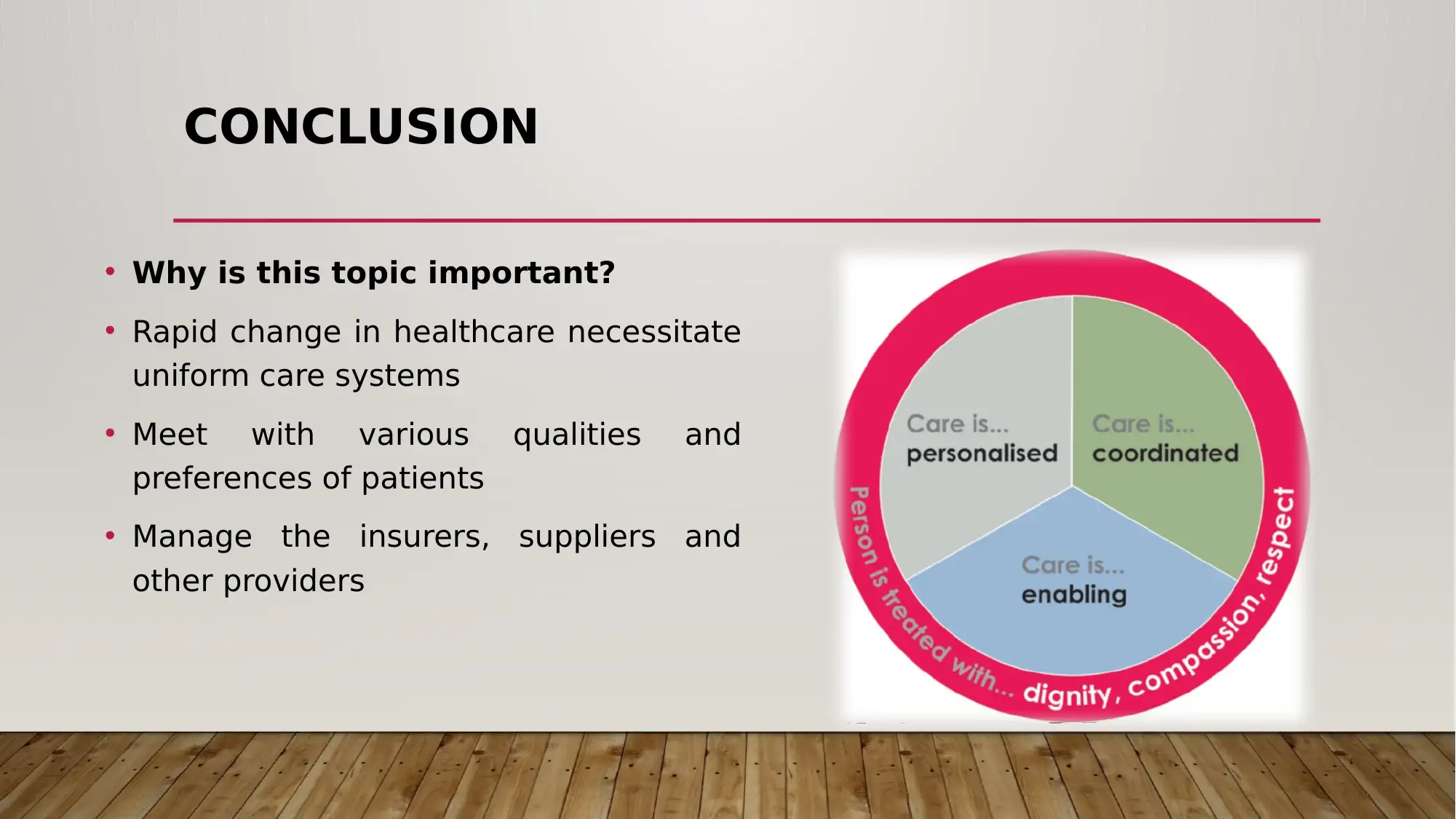
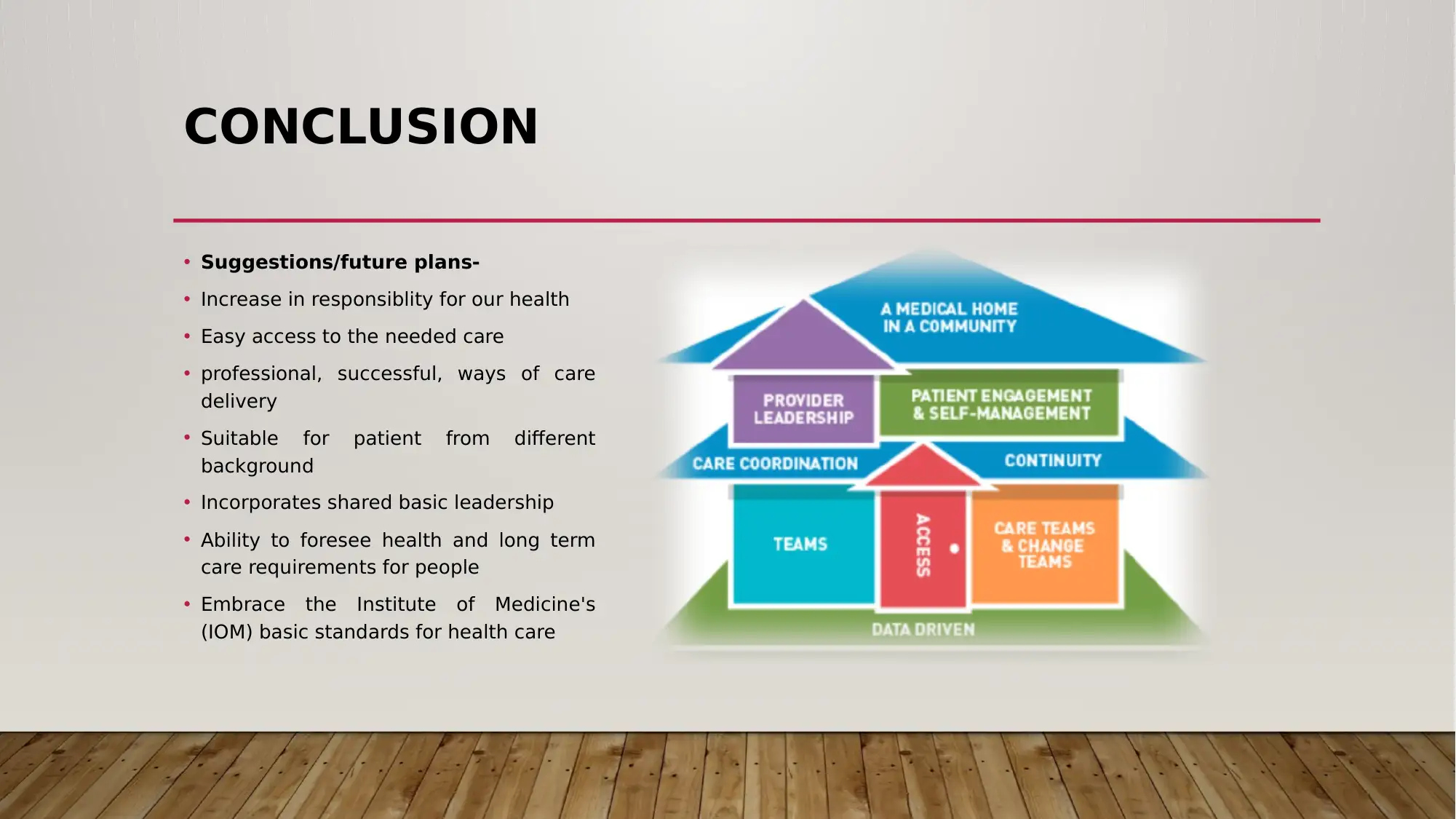
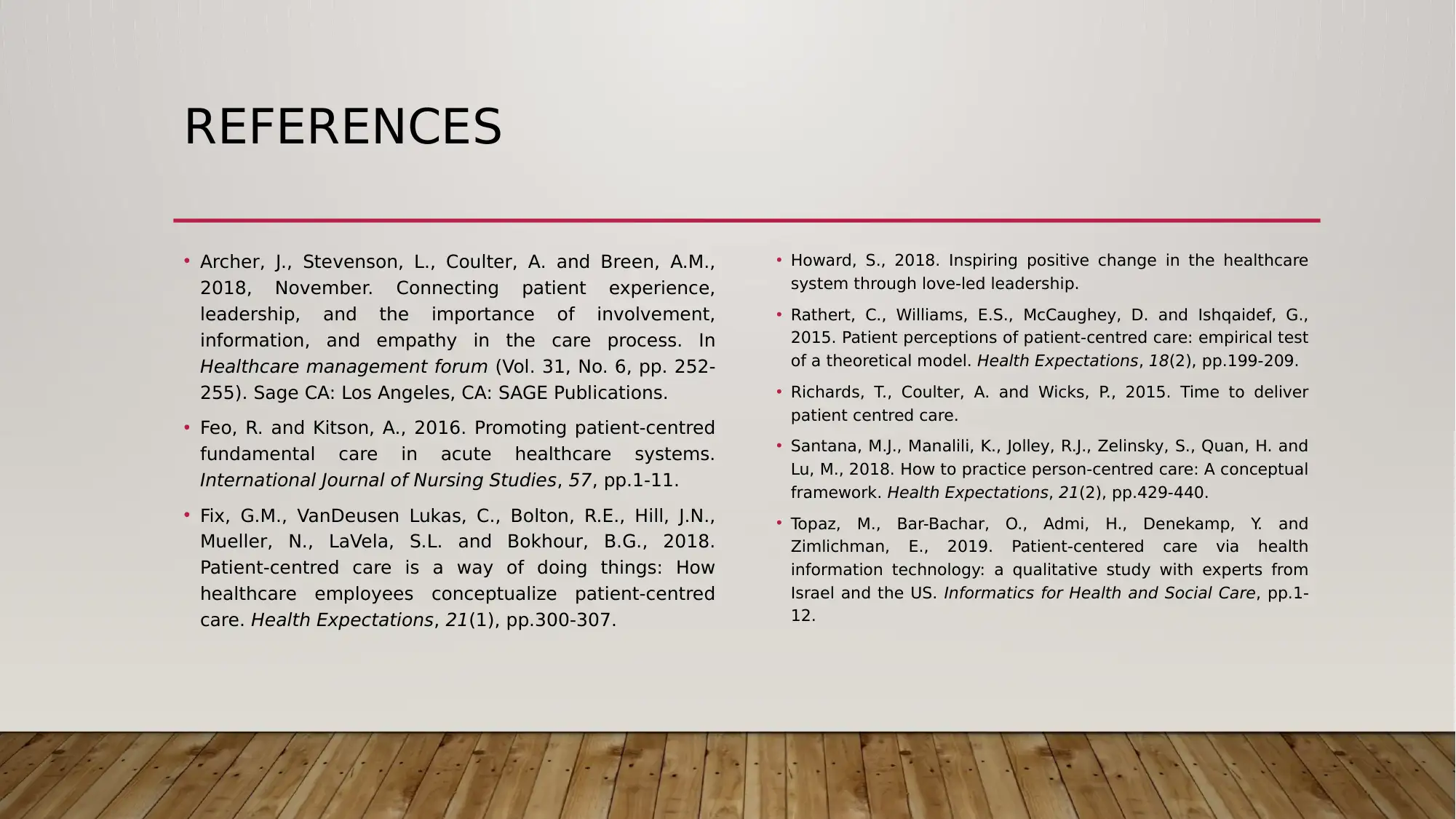




![[object Object]](/_next/static/media/star-bottom.7253800d.svg)